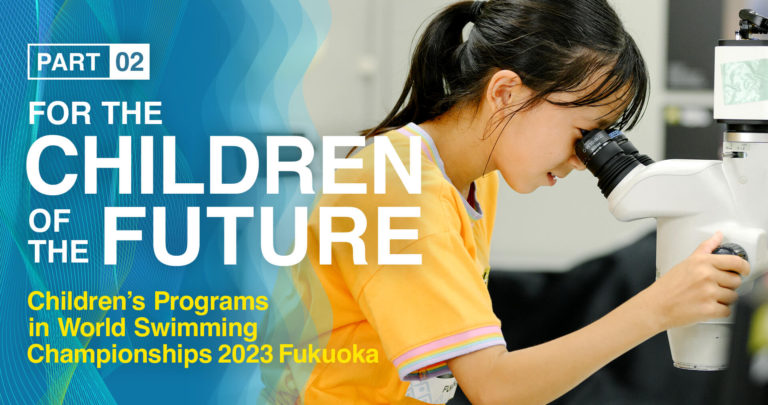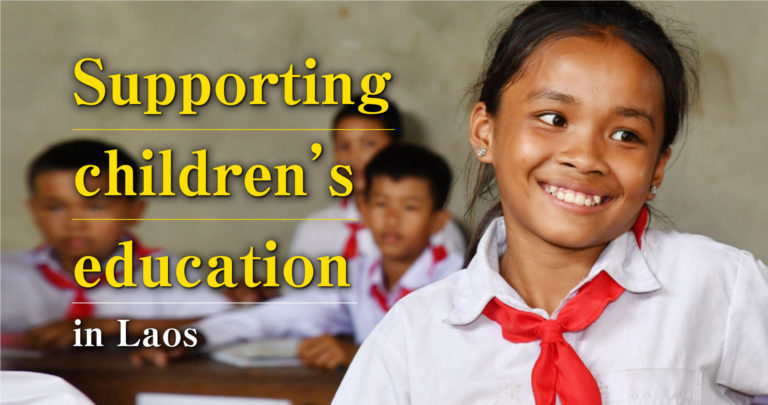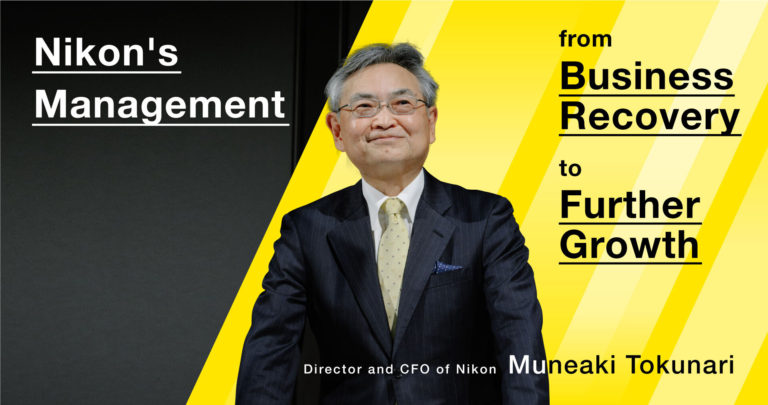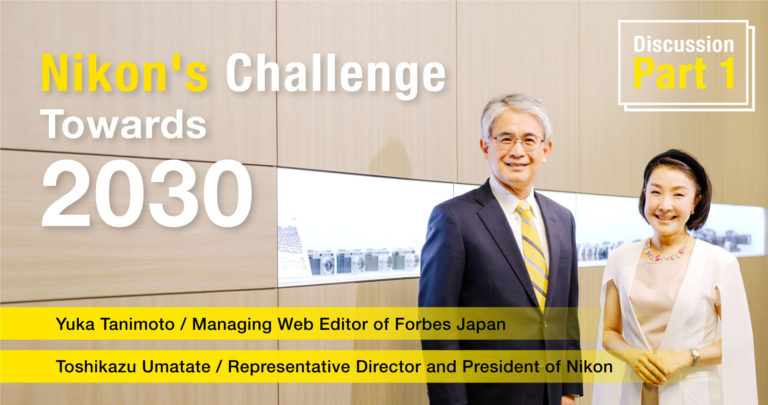Corporate Strategy
Part 1: Children’s Program at the World Aquatics Championships – Fukuoka 2023 —Teaching the Basics of Cameras for Children’s Independent Research Study—
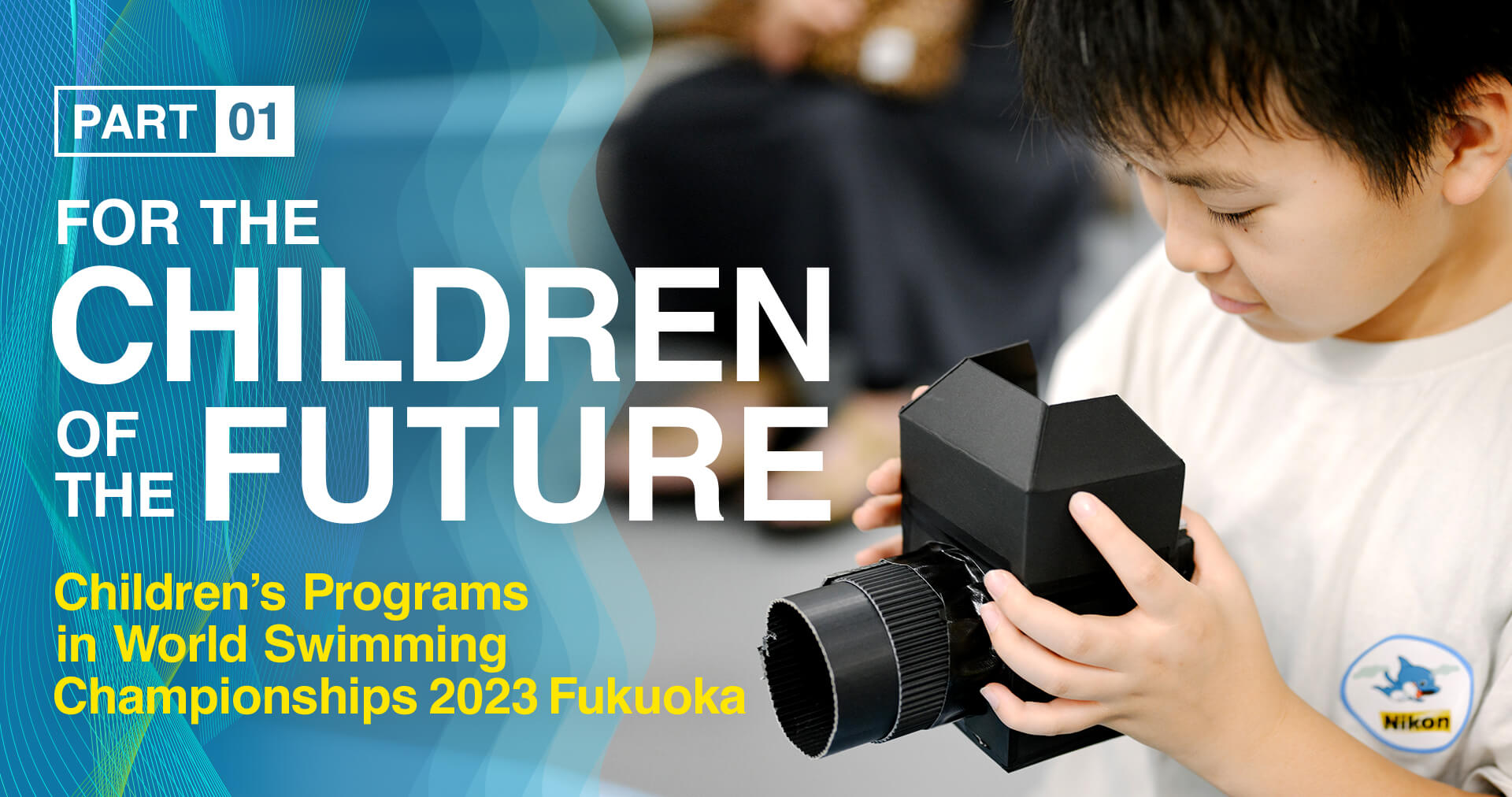
The World Aquatics Championships - Fukuoka 2023 saw fierce competition (held from July 14–30). Nikon also cheered on athletes in their pursuit to push their limits in the field of sports. Additionally, through our business here at Nikon, we aimed to help children grow and enjoy learning, in hopes that they gain a newfound aspiration as they lead us into the future. We contributed to enlivening the venue by conducting various activations geared towards children, such as our Children’s Program.
In this article, we will introduce various initiatives conducted by Nikon, separated into Part 1 and Part 2.
Spreading Nikon’s Initiatives at Our Corporate Booth
At the special venue “Fukuoka Ichiba” of Marine Messe Fukuoka, one of the sites for the competition, many events were held throughout to spread the culture of Fukuoka, such as food and drinks as well as merchandise. Nikon also hosted a booth at this venue to welcome guests and visitors.
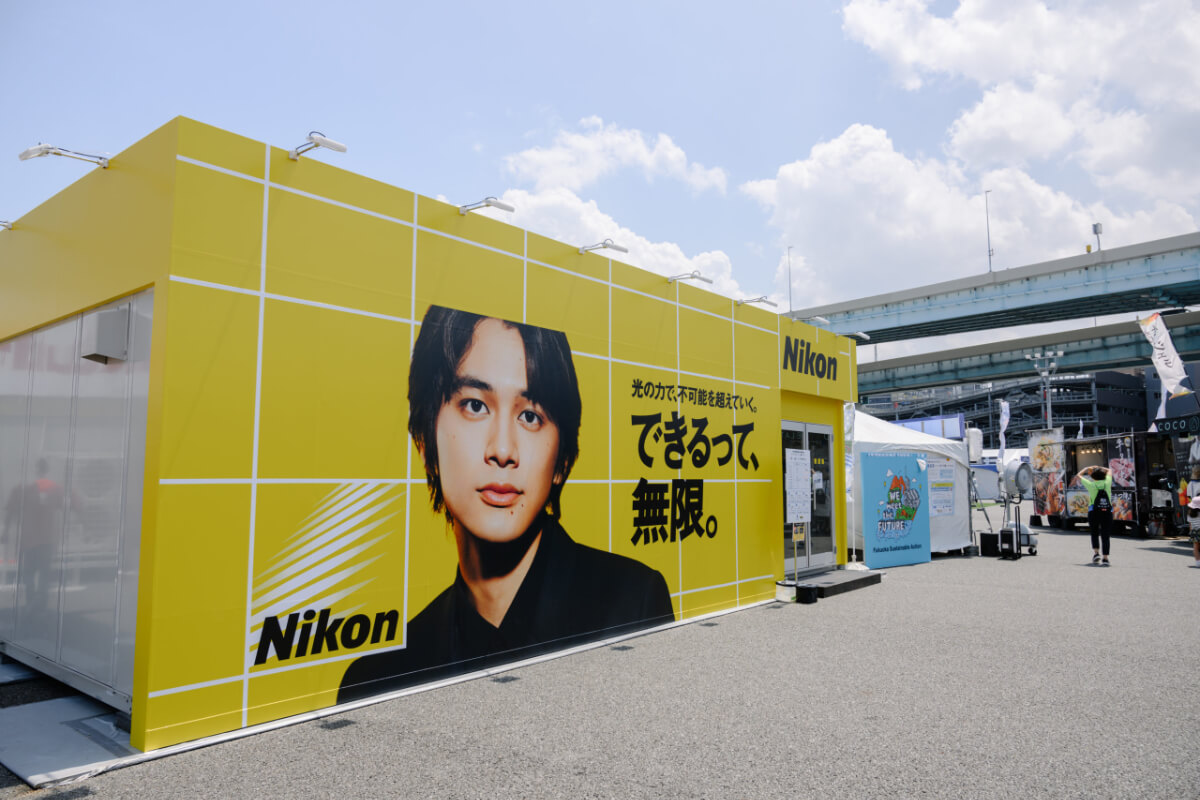
At the booth, Nikon displayed TV commercials and behind-the-scenes footage, broadcasted in Japan, starring the CM character and actor Takumi Kitamura to appeal Nikon’s businesses. Additionally, we created a photo spot featuring a mock podium for guests to enjoy taking pictures. Each day was planned with a different event, such as the “Camera Workshop” and “Microscope Workshop” (detailed below and in part 2 article), to bring guests face to face with Nikon’s businesses and products. Other examples include the “My Medal Workshop,” in which guests drew their own illustrations on a round piece of wood, and the “My Race Number Workshop,” in which guest created their own race numbers based on the same design as athletes. Through activities like these that were linked with the competition, we helped children to create summer memories.
Nikon’s Services and Products that Support the Backstage of the International Competition
On the other hand, for the competition venue, Nikon created a hospitality lounge for photographers and press members to use freely—the first of its kind for this competition. In addition to creating a space for mephotogprahers/press members to rest and providing catering, we also established a corner for members to test Nikon’s newest models, namely our newest addition of the Z 8 as well as our flagship model, the Z 9.
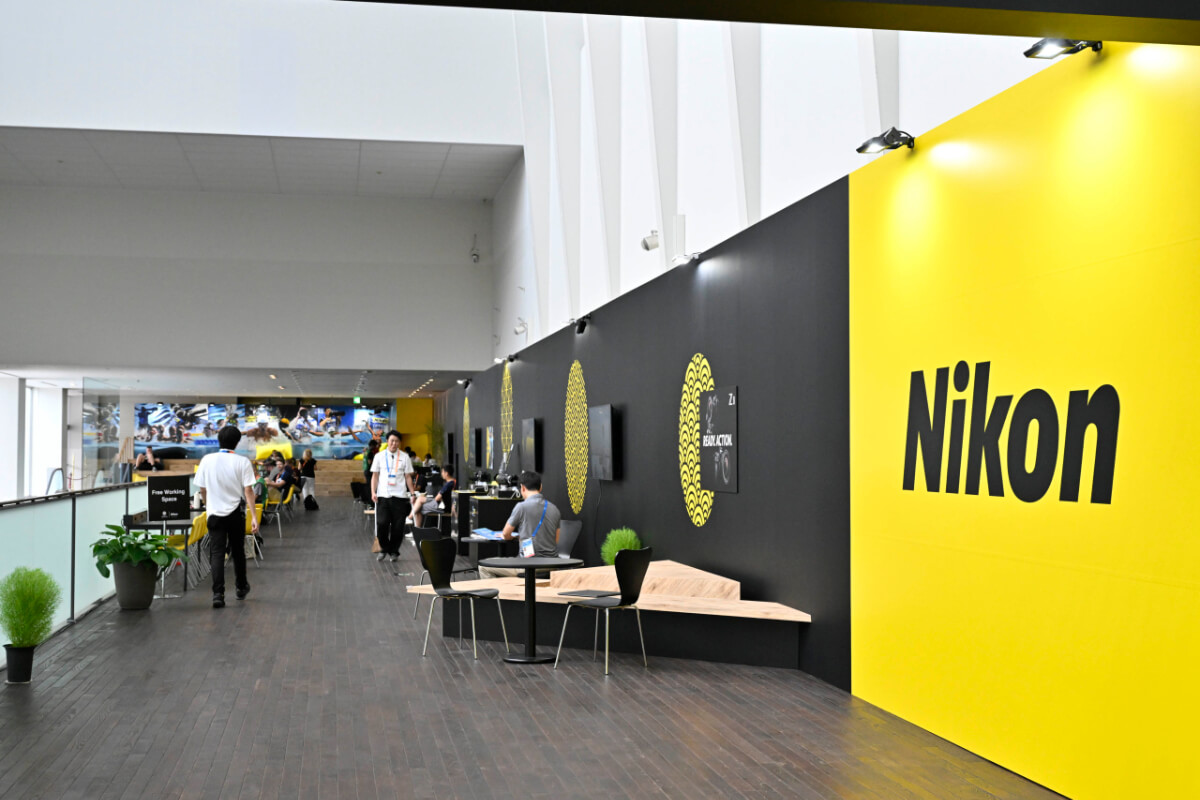
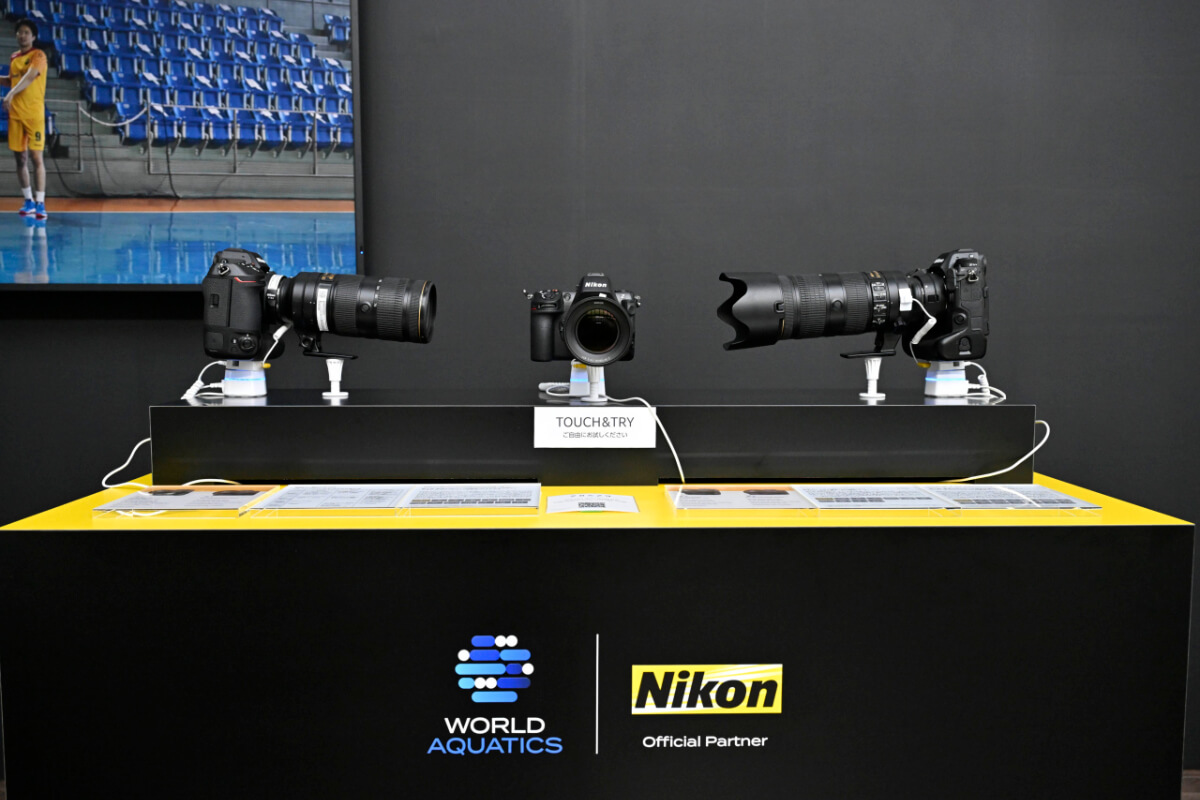
We also created a photo spot where professional photographers capture athletes, as well as the service center “NPS (Nikon Professional Services)” to provide support to photographers by offering maintenance, cleaning, repair, and rental of camera equipment
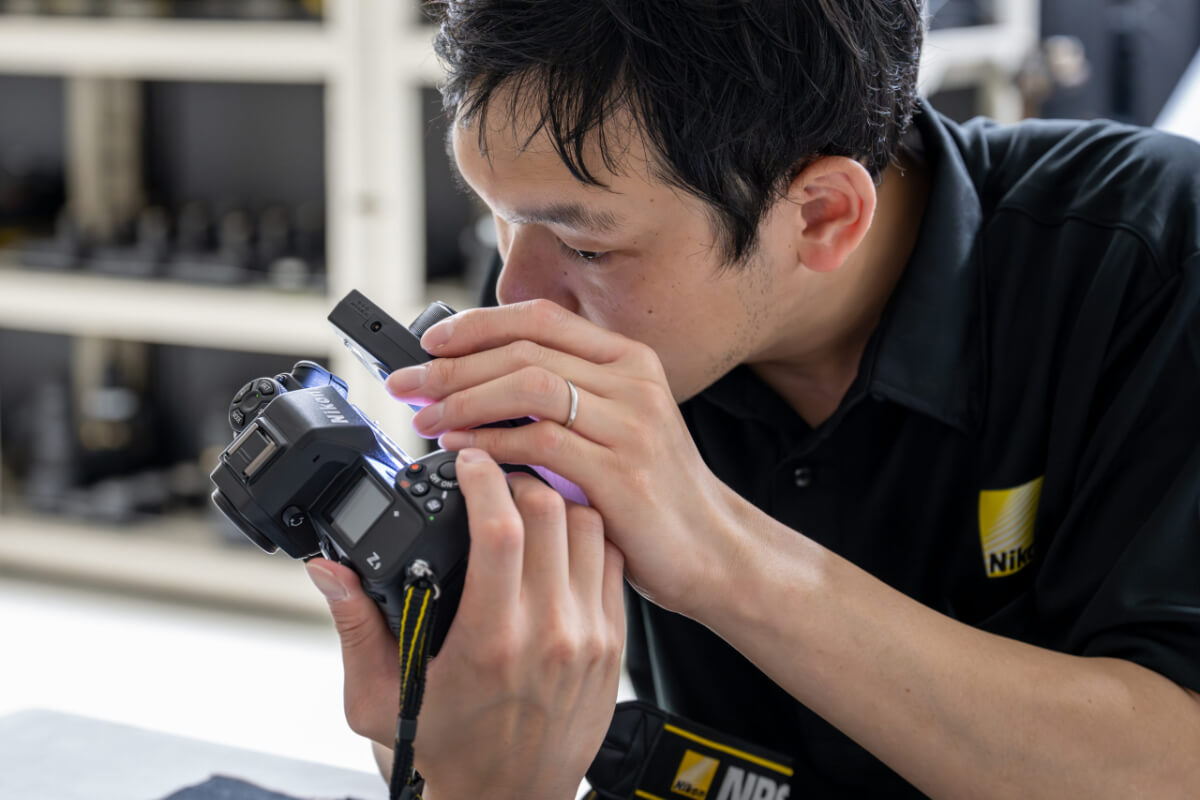
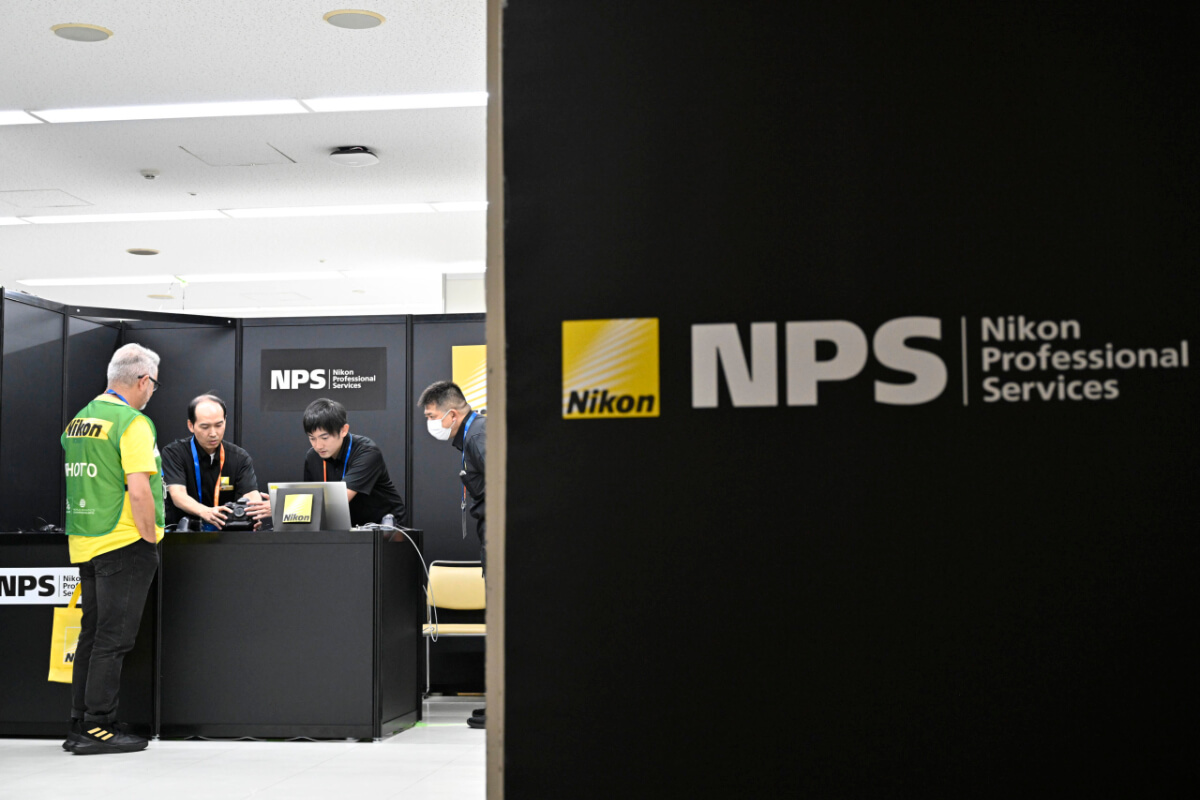
Conducting a Children’s Program Unique to Nikon, an Official Partner
On July 24 and 26, we welcomed elementary and middle school students living in the Kyushu region and conducted the “Backstage Tour,” in which students witnessed the rare sight of professionals at work. Another initiative was our “Children’s Program,” consisting of workshops that featured Nikon’s businesses, for children to enjoy the competition from a variety of perspectives.
The first stop of the tour was the competition venue, where the world’s top athletes gather to perform at the highest level. Having been to an international competition for the first time, the children were excited to see the passion of the large audience and competitive spirit of the athletes, applauding at the end of each race.
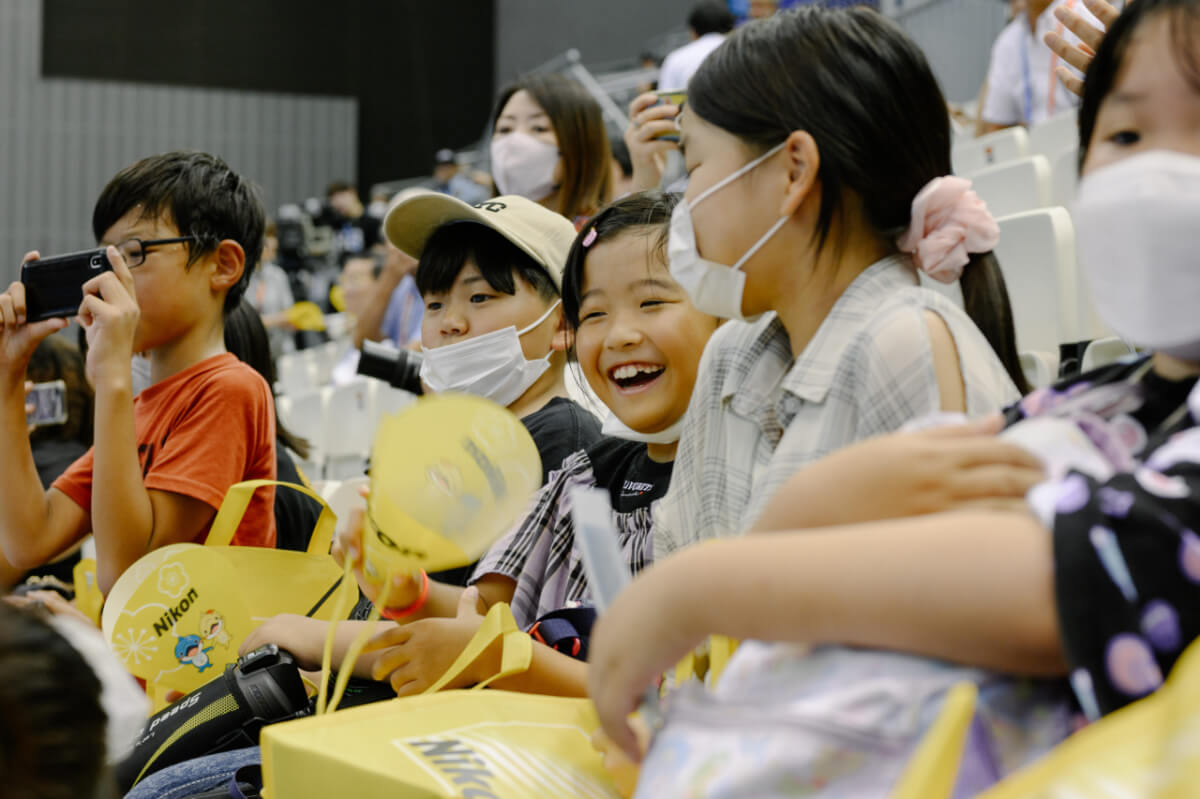
After viewing the competition, the children toured the backyard. They walked down from the stands to the poolside and view the pool from the same perspective as players. Looking on the swaying waters as the stadium lights hit its surface, the children noted how much larger the pool seems here than from the stands. Next, they moved to the podium, where the children enjoyed a panoramic view of the entire venue. They were provided actual medals to wear around their neck while taking commemorative photos. Finally, the children experienced the interview zone, where only athletes are permitted, as well as the service center operated by Nikon, Nikon Professional Service. Here, they witnessed Nikon professionals as they worked on camera repairs/maintenance and were given an opportunity to handle actual equipment from the numerous cameras and lenses on display.
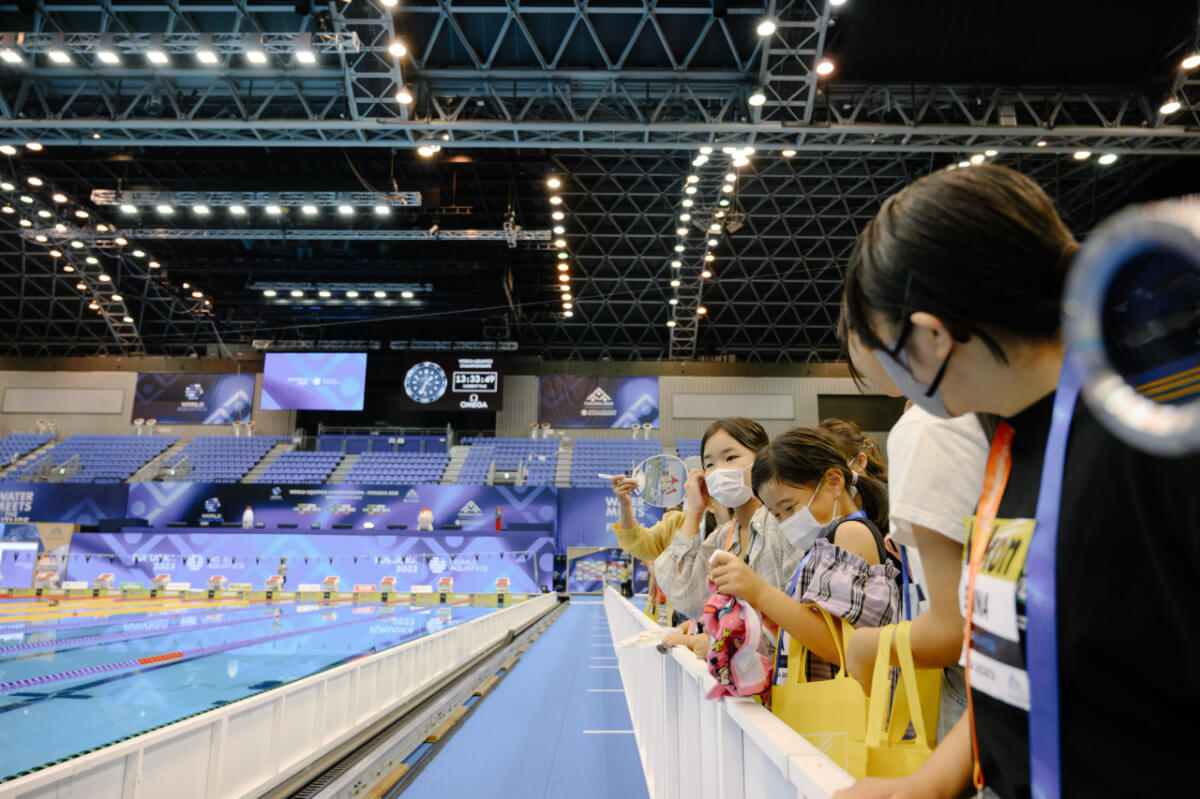
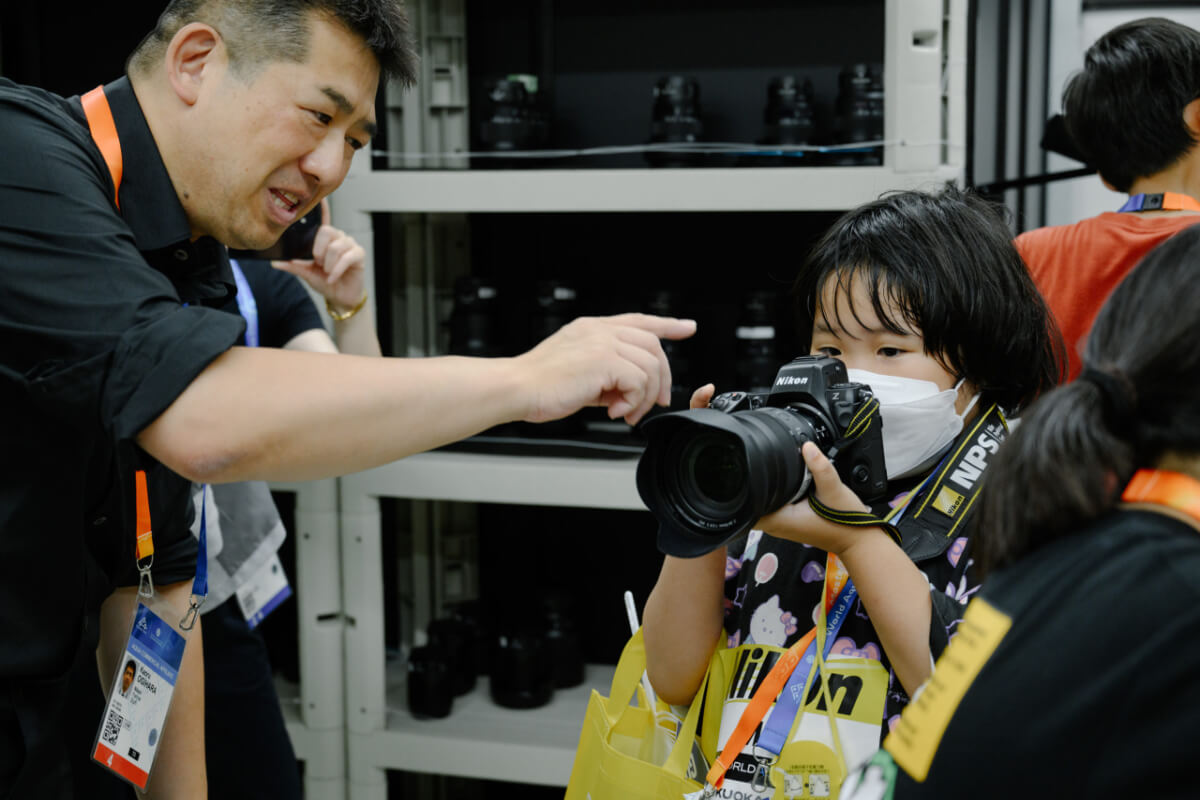
A Children’s Workshop that Teaches the Basics and Design of Cameras
The second half of the Children’s Program is the much-anticipated workshops. At the Camera Workshop, the children created a “camera obscura,” the original form of the camera.
A camera obscura is a device that projects imagery using the principle of photography. A discovery said to be made by Aristotle, this works by opening a small hole on a side of a darkened box so that light can shine through, projecting imagery upside-down as a result. It’s known for its usage among artists such as Vermeer, who utilized its precise imagery of external scenery for his own sketches.
The workshop was led by employees from the Design Center as the instructors. After being provided two lenses, kraft paper, and tracing paper to act as a screen, the children begin assembling parts to create a camera. The first step is to fold the kraft paper to create the “box” and “tent.” Even with a trace to fold down on, the children learn the difficulty of precisely assembling the kraft paper. Any unnecessary light that can shine into the box will lead to fuzzy imagery. The children focused intently as they worked to carefully fold and tape down the box with black tape, so as not to allow any crevices.
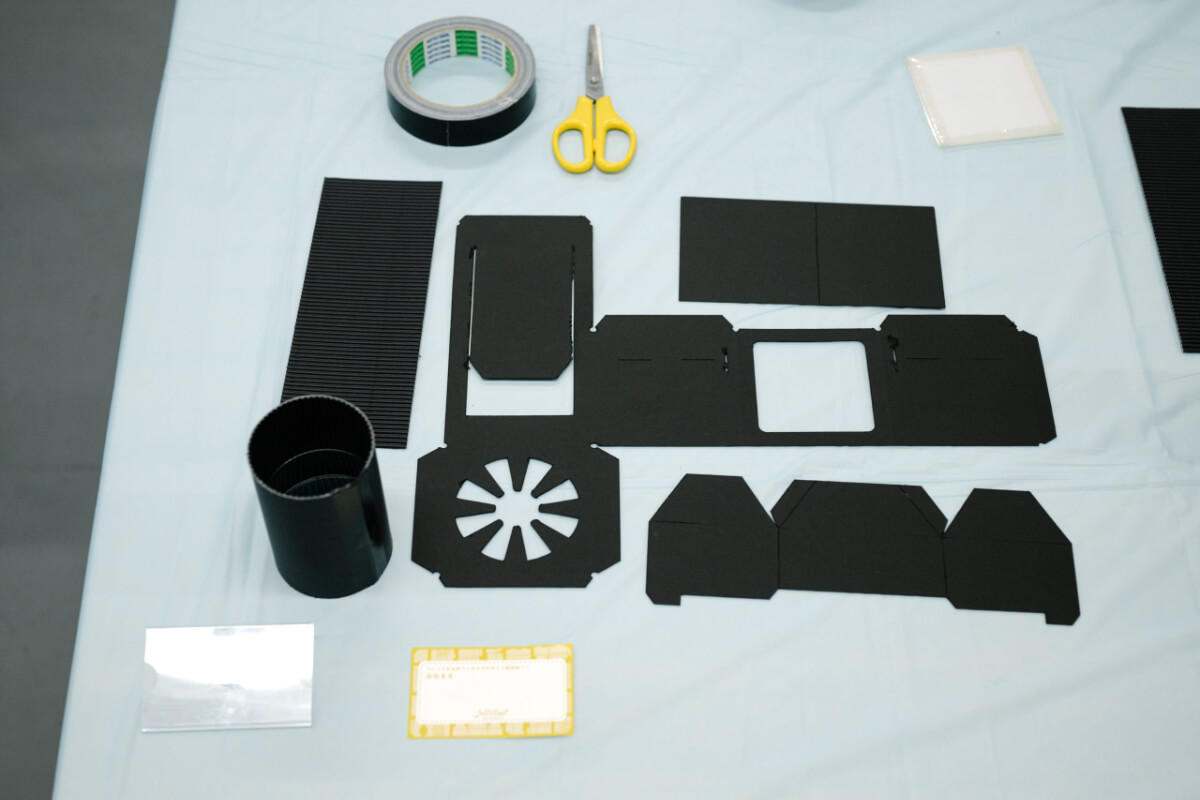
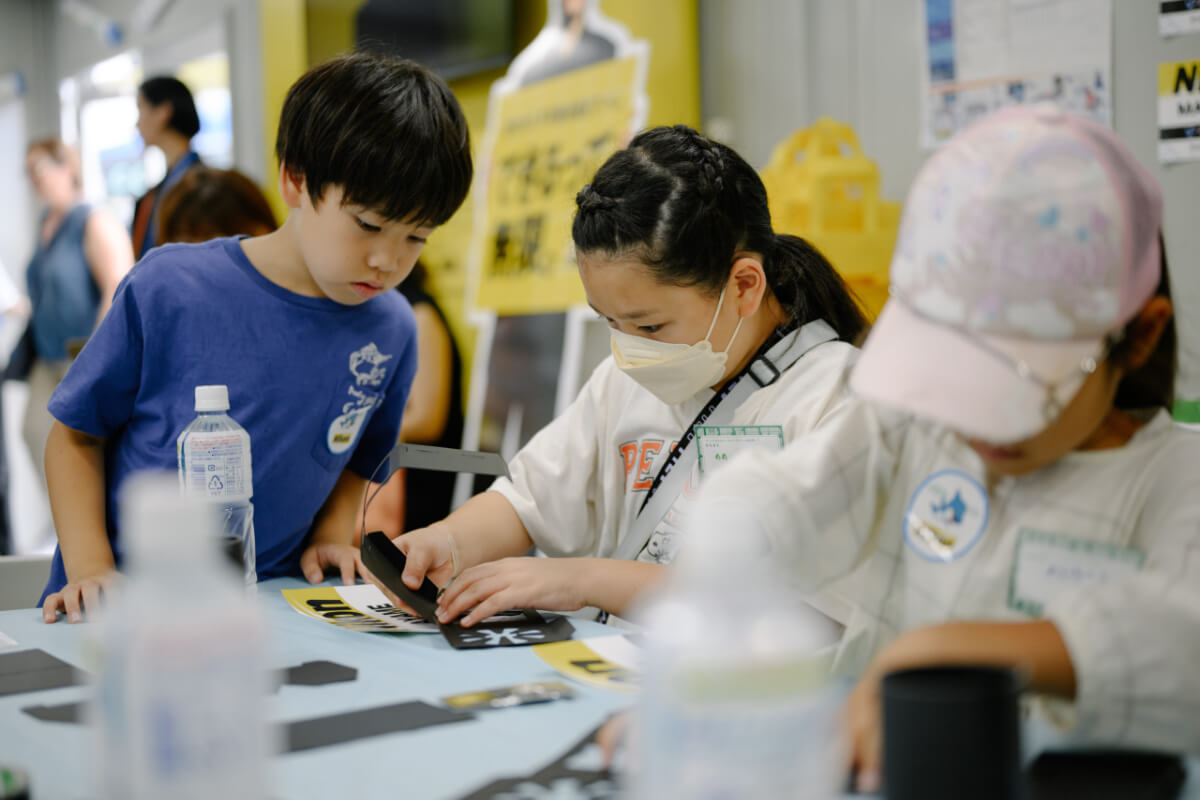
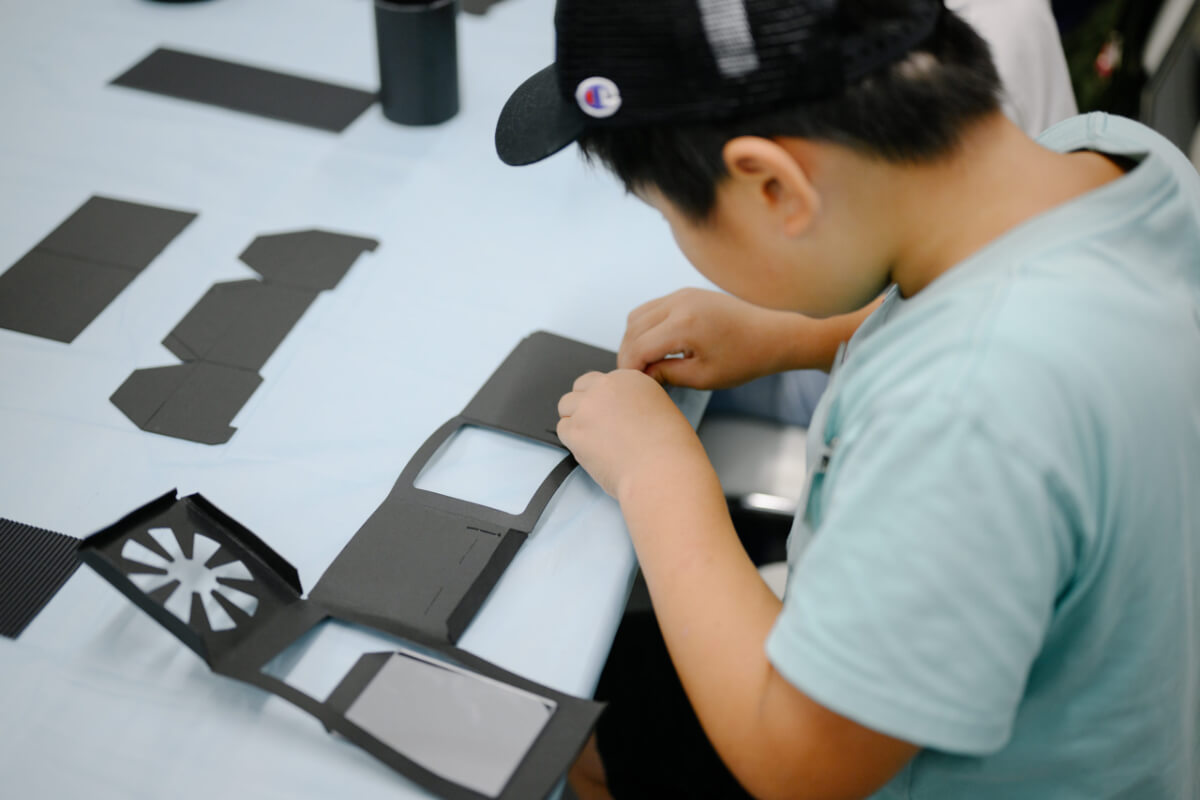
Next is the tube component, which will become the lens. After rolling the kraft paper to fit the round opening on the side of the box, the lens is attached and docked to complete the camera obscura. The children peek into the box and lay the tracing paper on top of the tent to see if an image is projected, and… voila! They look to see if an image appears, which signifies the project was a success. As they slowly move the lens back and forth, they adjust the focus to view the image. The children’s focused and stern expressions immediately light up as they see the resulting image.
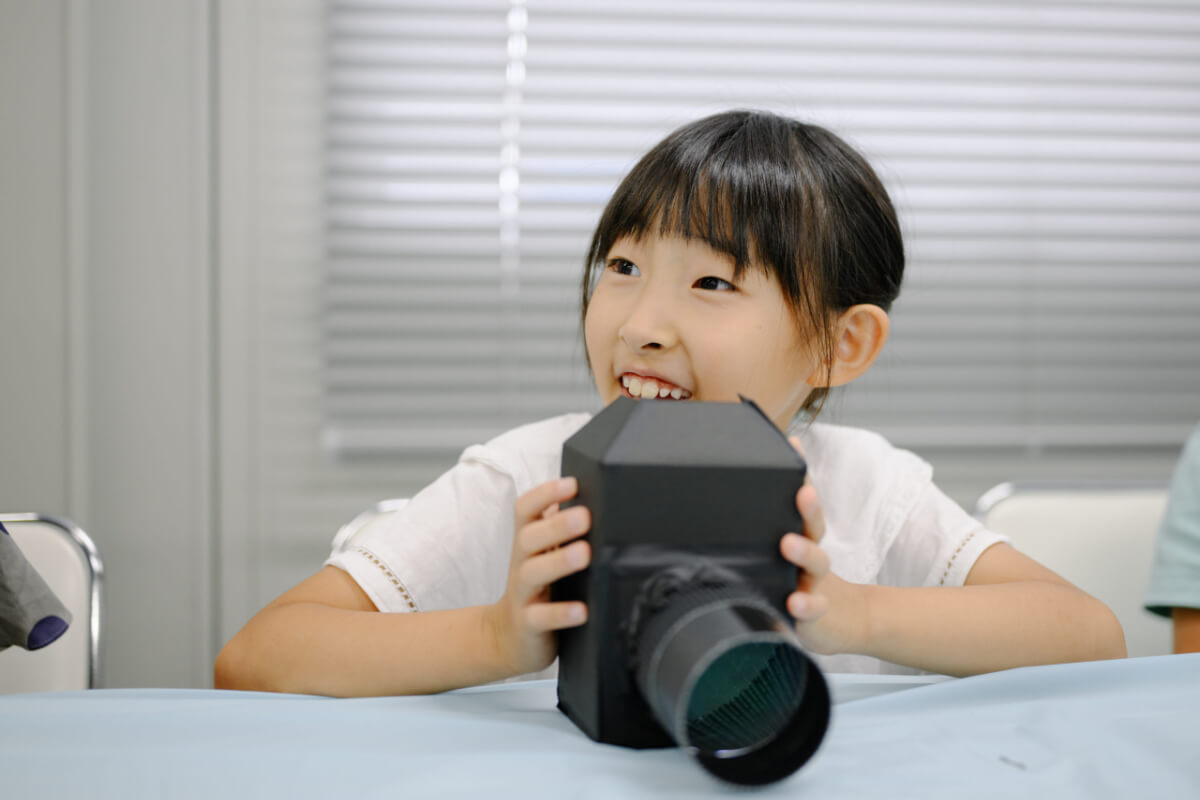
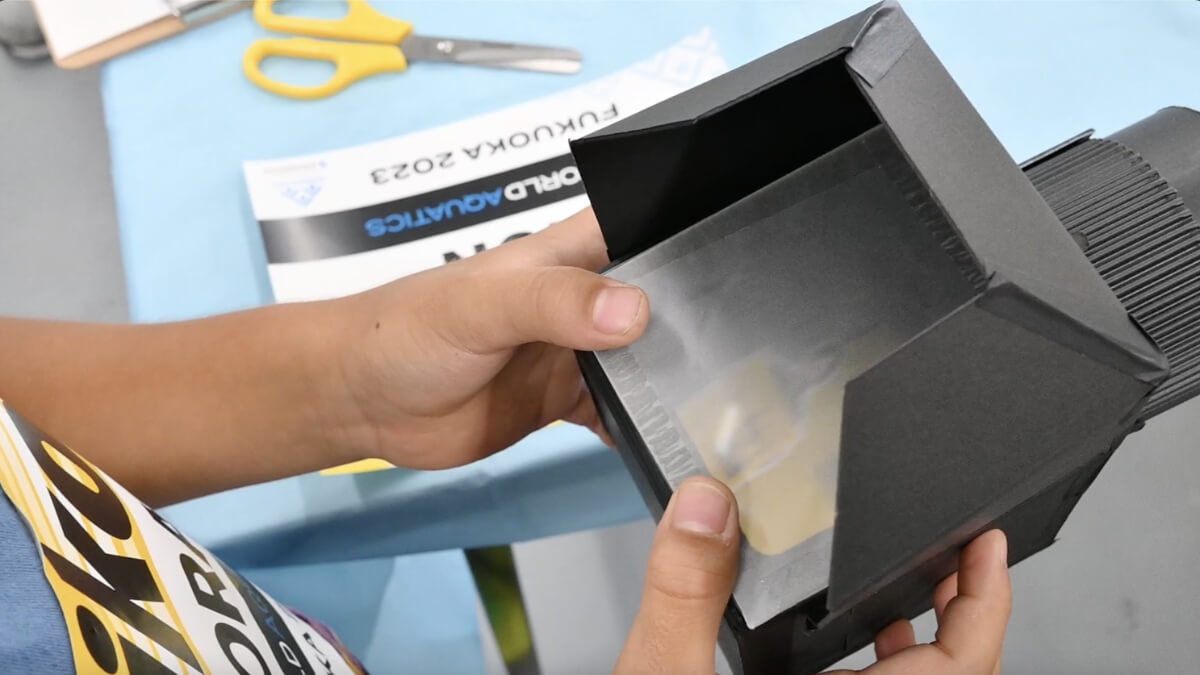
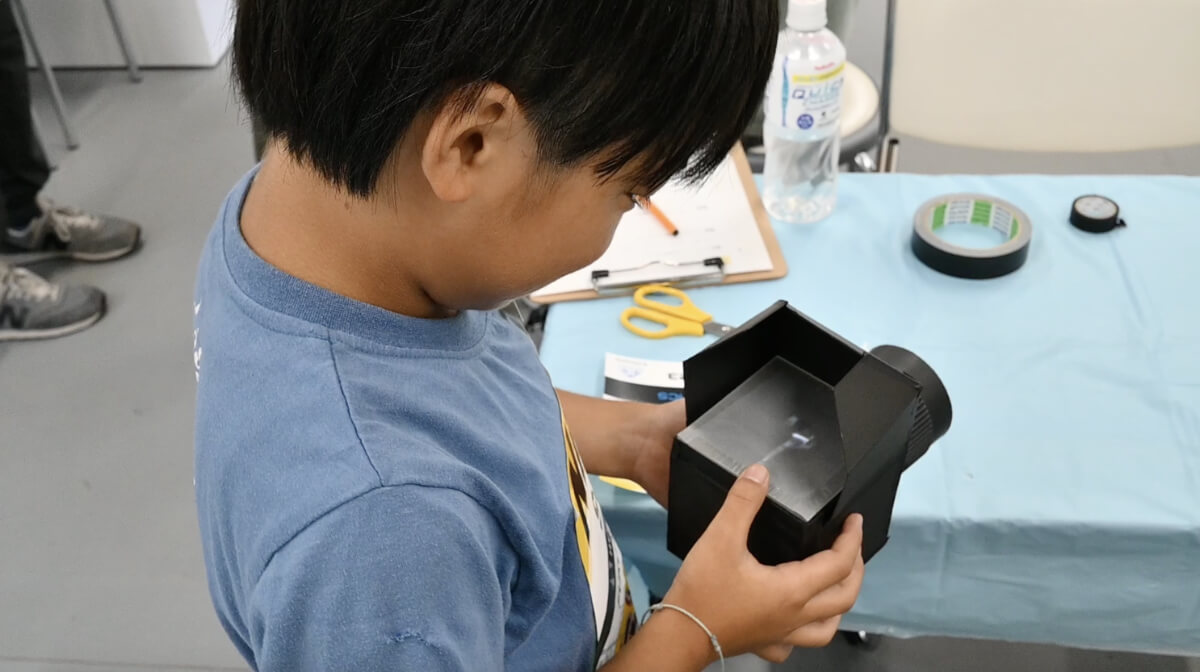
The next step is design. Before beginning, the instructor shares with the children that “design means to add value.” Under the theme of creating a “camera to use at the swimming competition,” the children begin on their first task: to construct the grip. After pondering how they should hold the camera to get the best pictures, as well as what they felt witnessing the competition, each student cautiously plans their designs and shape their ideas. After the grip comes the camera accessories, the liveliest part of the workshop. The children selected from a wide variety of accessories, such as colorful fuzzy wires, various sizes of beads, stickers, ribbons, and fabrics to customize their cameras to match their styles.
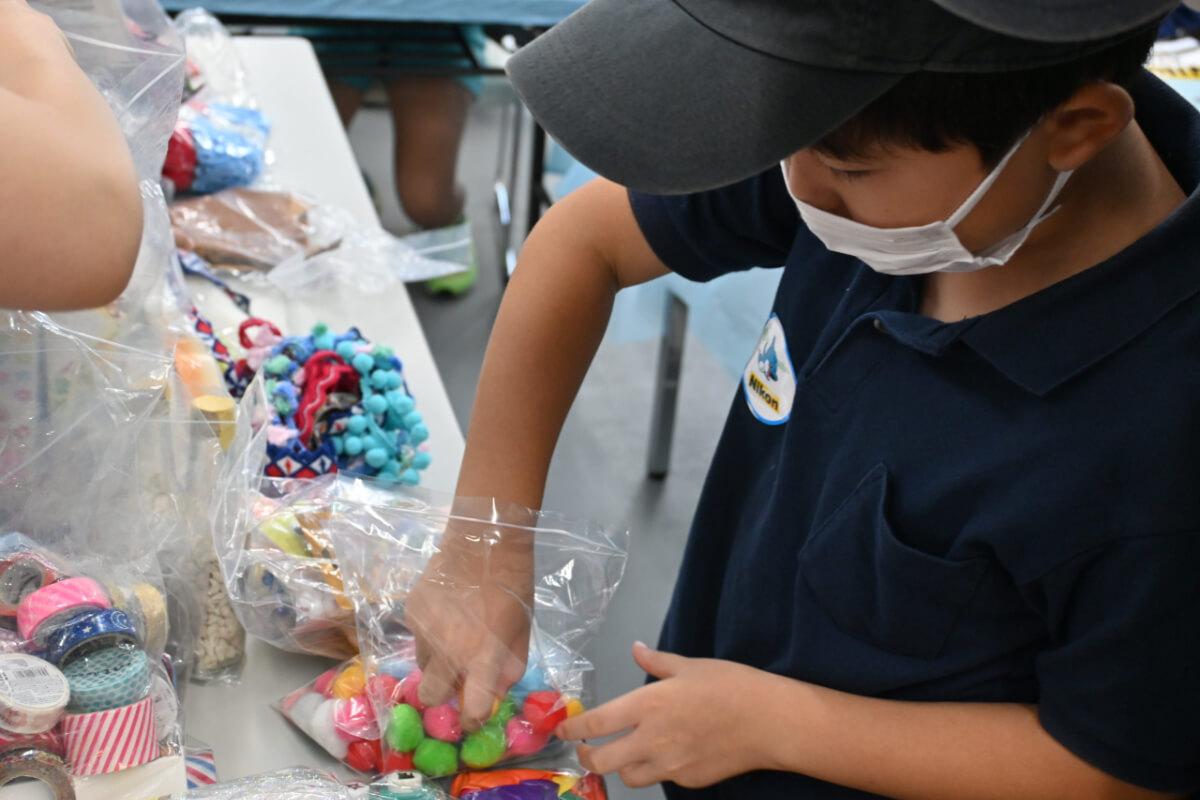
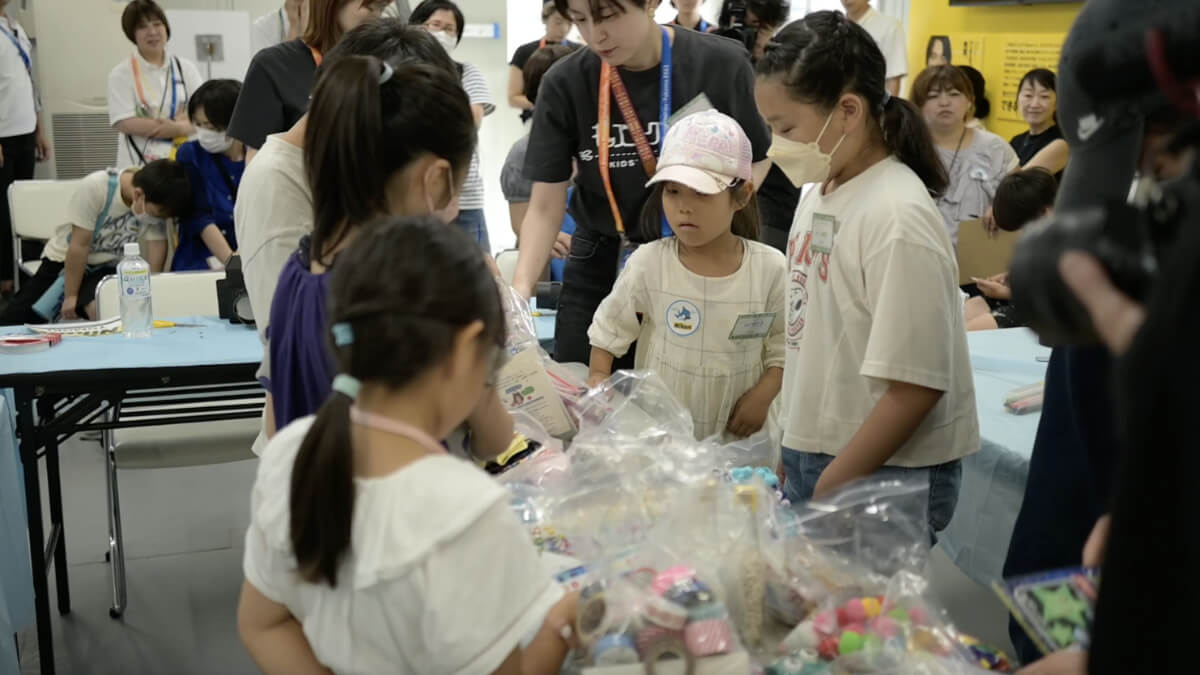
Finally, each student gave a presentation on their cameras.
Eita, a second-grader, who participated with his mother and older sister, named his camera the “Tournament Camera.” He comments that “the grip was placed opposite to the lens” for easier handling. “It was weird to find out how cameras work,” he added.
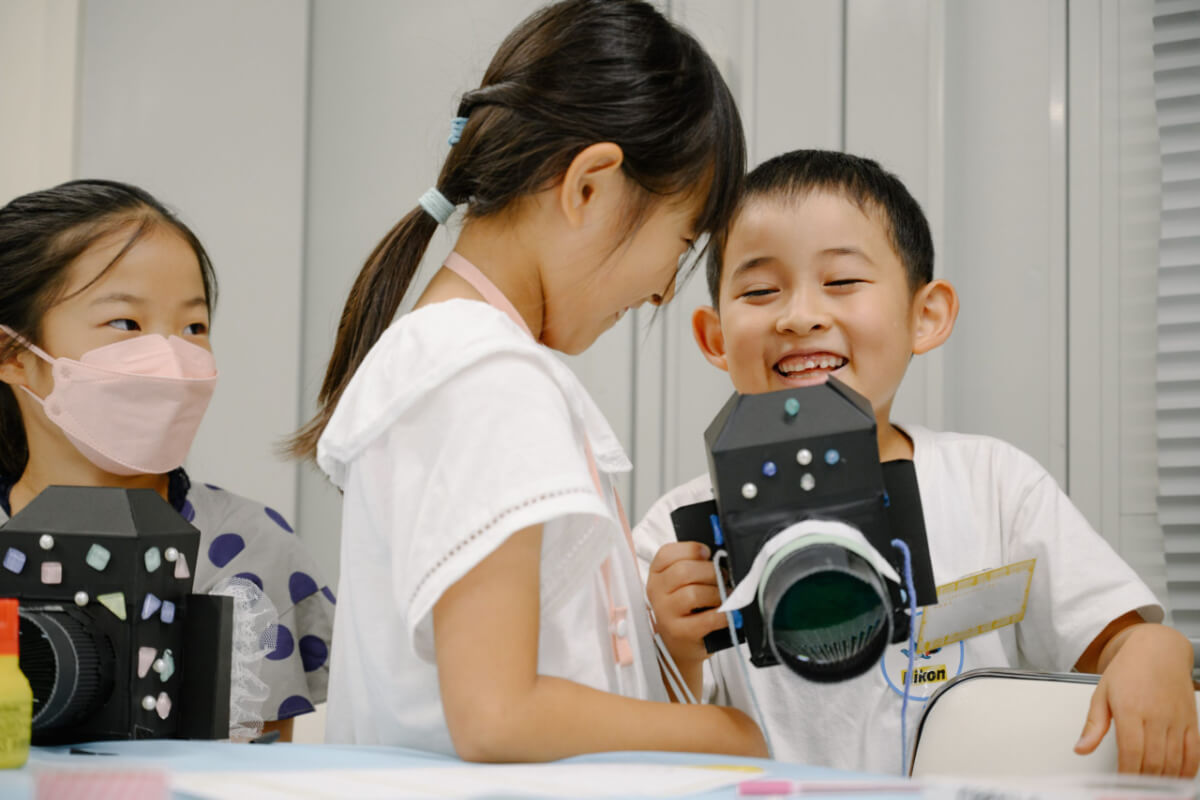
Tomoki, a sixth-grader, looks at his camera and notes, “It looks like the dog at my grandpa’s house.” His “dog” camera features two eyeball stickers above the lens. Now that you say that, it certainly starts resembling a dog. He smiles and notes that the completed camera is a “present for my mom.”
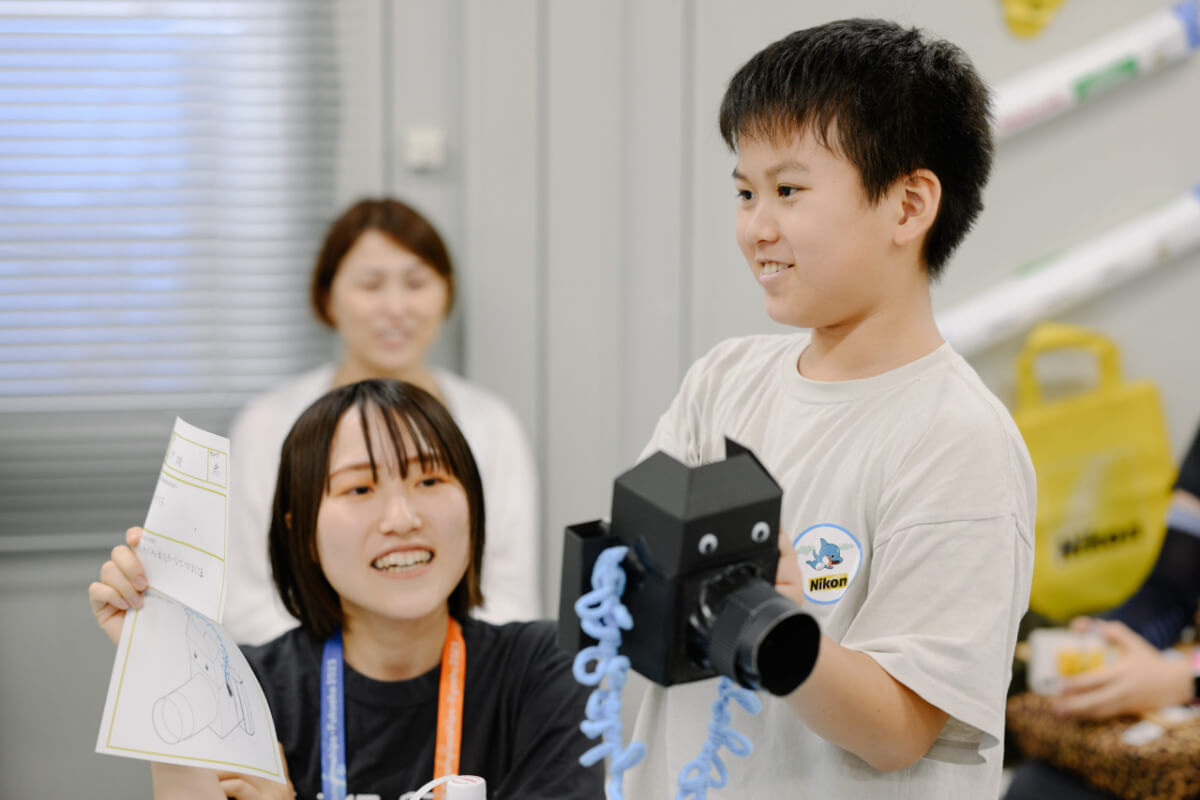
A fifth-grader named Ayame, who notes that she likes arts and crafts, named her camera the “Colorful Camera.” She decorated her camera with a light blue fuzzy wire as a portrayal of the pool and added other colors and materials to achieve a colorful design. On why she added a grip on each side of the camera, she answers, “Because it’s more stable and you have better chances of getting a good shot if you can use both hands.” She looks over her one-of-a-kind camera and smiles happily.
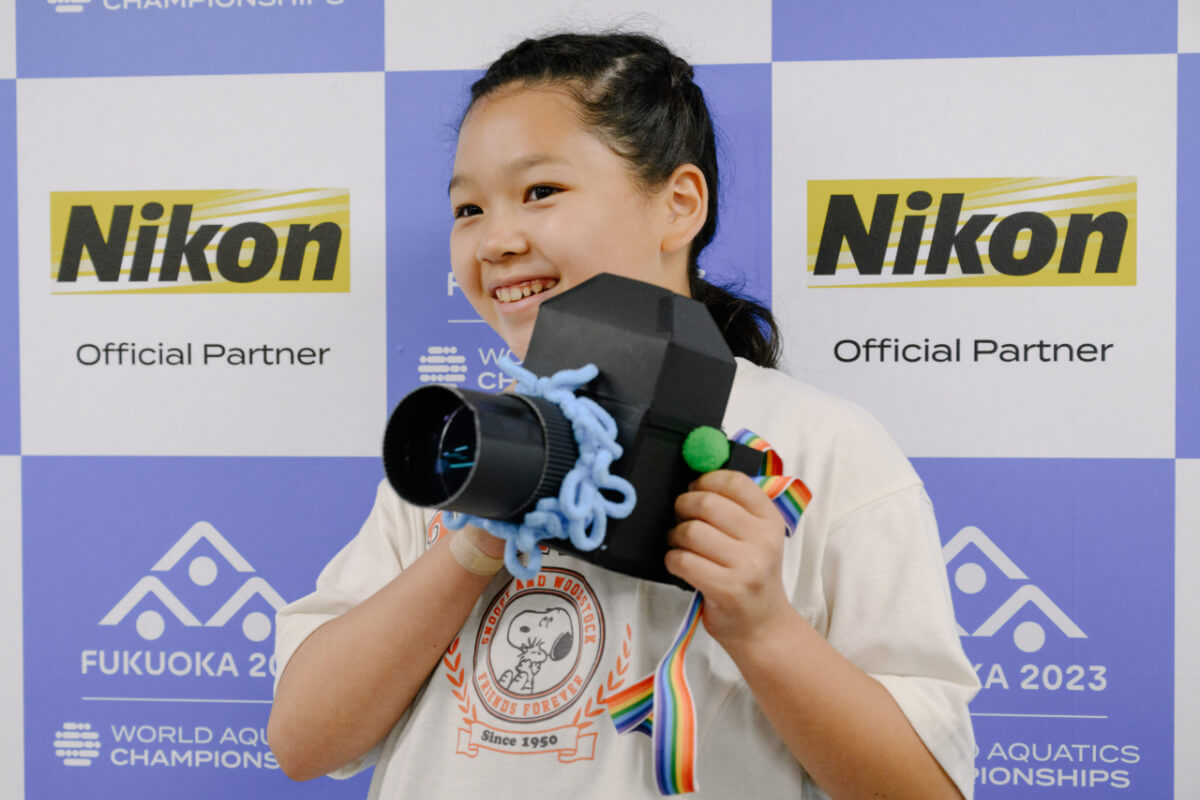
The workshop concluded with a commemorative group photo with everyone’s original cameras. They stayed afterwards to enjoy their time for a bit longer, taking pictures of their mothers and siblings or projecting images onto the screen.
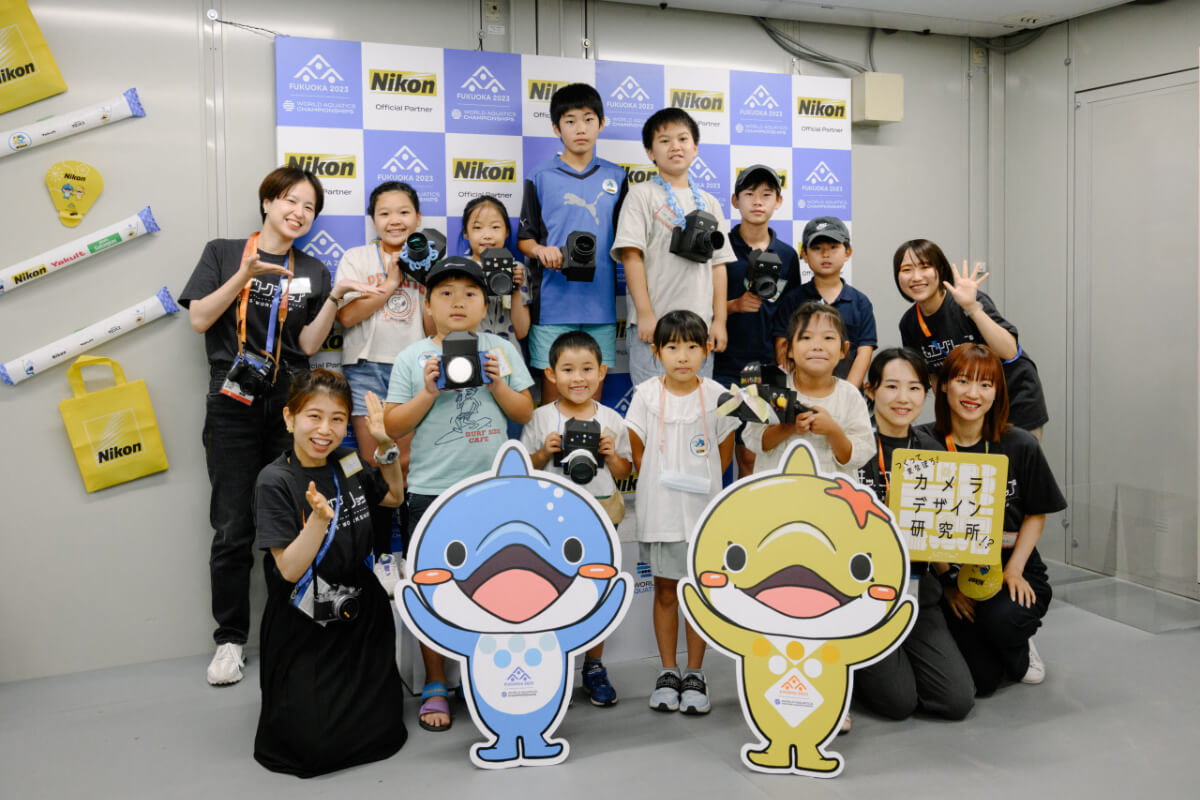
Below are some comments and thoughts from participating children.
“I participated to work on my independent research study. The hardest part was fitting the lens into the camera. I had fun walking down the same course as the athletes during the backstage tour.”
“I had a lot of fun today. The best part was touching real cameras!” “It was difficult to assemble the box, but it was fun to see it complete.”
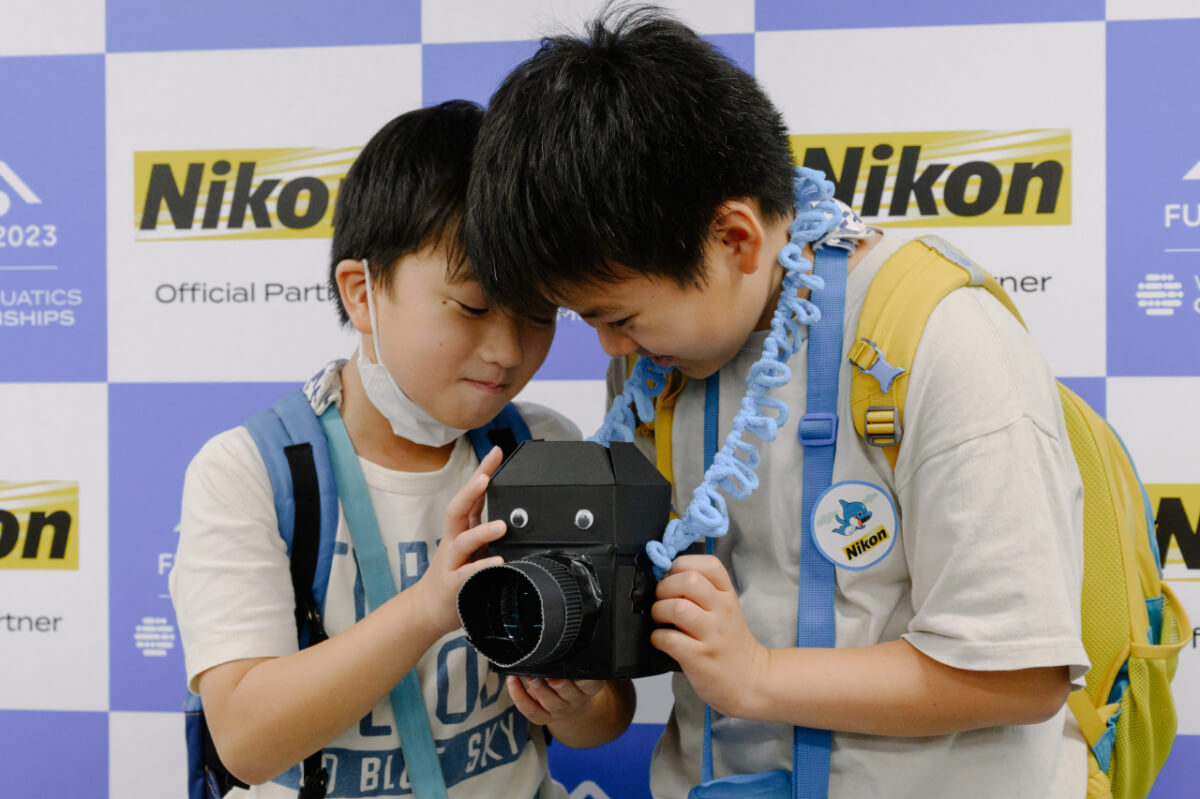
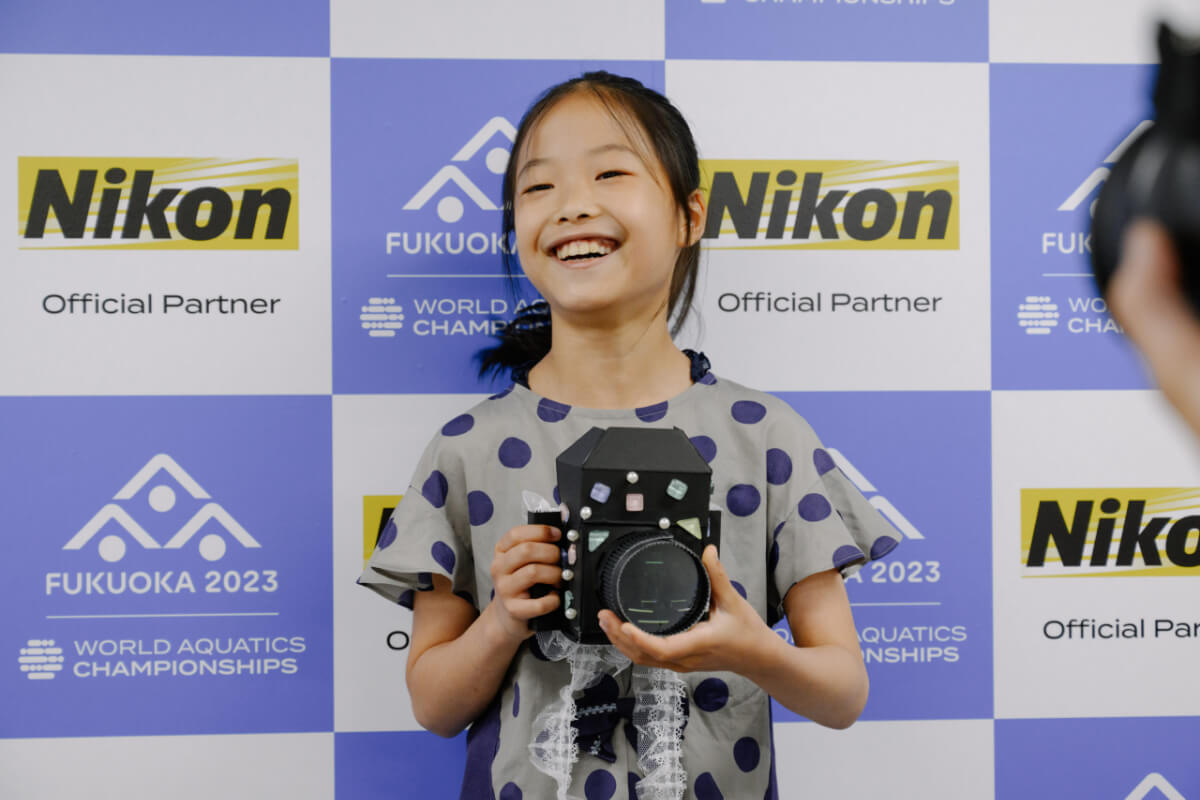
Even with the program lasting over four hours, the children remained lively throughout, engaging with activities under the hot summer sun and amid the feverish excitement of the competition. It was impressionable to see them enjoy the event in full force.
In Part 2, we will continue our report on scenes from the Children’s Program, focusing mainly on the world of microns as seen in the Microscope Workshop.


